We recently asked the BuzzFeed Community to tell us the small, useful ways they’ve saved money on food, and they gave some super helpful and practical advice. Here are the results:
1.“Get a food sealer! My mom got us one for Christmas a few years ago. My husband feels we have too many kitchen appliances and was skeptical, but it has saved us so much money. He shops sales and buys meat when it’s discounted and seals and freezes it for later. It stays great so much longer, and we don’t have to toss anything with freezer burn.”
—39, Germany
2.“Don’t be afraid to buy the stuff that’s ‘reduced for a quick sale.’ Also, don’t think in terms of a recipe, think of what would probably taste good together. For example, at the market last week, I was able to snag a pound of ground chicken for $0.99. Frozen veggies were on sale, as were the fresh salsa. I threw it all together in a pot with a can of black beans and a packet of taco seasoning, and boom! An easy, healthy, delicious dinner that will feed me three or four times. Total cost: about $6.”
—jmacxjr
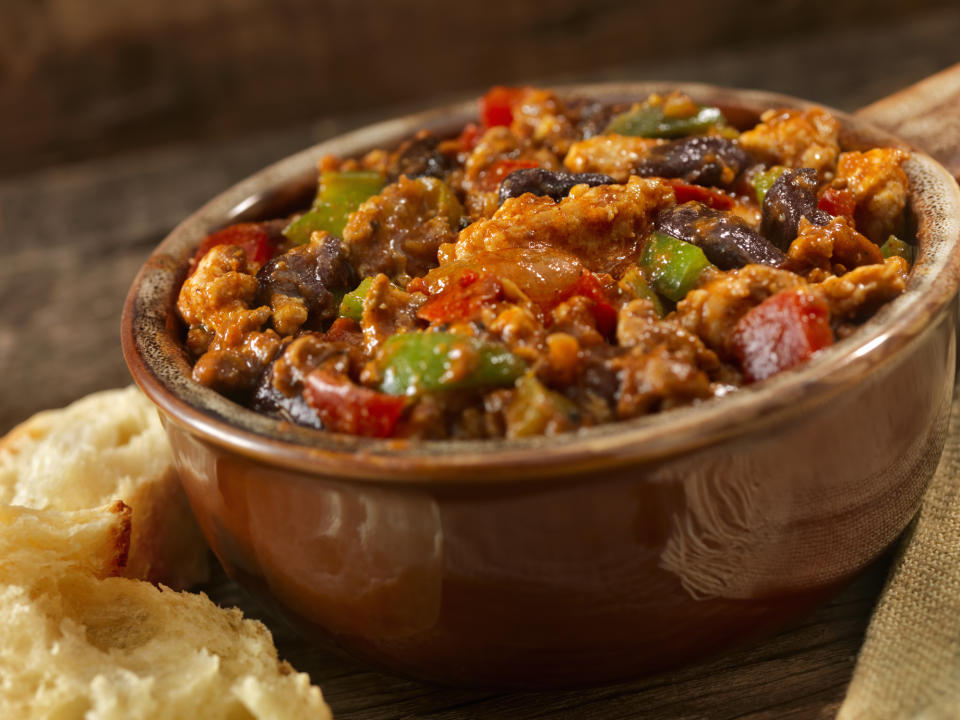
3.“Too Good to Go — an app that pairs up with restaurants, cafes, and grocers to hand out food that they cannot sell by the end of the day at a discount. Also, I use Bing (you use it and they have gift cards for food spots — paid for my eating out in college). When shopping, I pick an item on sale (especially if in bulk), and planning meals around that item is super helpful. Also, city vs. suburban grocery prices are actually hella different, so I’ll usually go out [with] family in the far suburbs, buy bulk with them, and split the cost. Even with the extra Metra ticket cost, it saves money.”
“Lastly, your freezer and pickling are your best friends. Bought a Costco six-pack of chicken breast? Freeze, cut up, and marinate the lot of them. Cabbage or cucumber about to go bad? Kimchi.”
—24, Illinois

4.“I try to limit food waste as much as possible, specifically with produce. For example, if I buy a box of strawberries, they tend to go bad quicker if I leave them in the box, so I always wash them, cut them, and portion them into containers so they’re ready to eat — and they end up lasting longer that way, too. Buying regular carrots is cheaper than baby carrots; I do similar with them — I wash and peel them, and then cut them into snack-size portions so I’m more likely to reach for them, and they don’t go bad. With bananas, I leave half the bunch out to eat normally and then chop up and freeze the other half to use for smoothies or ‘nice’ cream.”
“When I’m too busy to deal with prep work, I buy frozen fruits and vegetables because they last so much longer; they’re ready to use right from the bag, and I don’t have to worry about them getting moldy before I can use them.”
—joellekayt

5.“A cheap but fulfilling meal is miso soup or any bone broth soup. Miso soup paste containers are, like, $10 if you get them on sale, but they last me SOOOO long (easily three months of lunch side soup). And miso soup is easy to jazz up, pour it over rice for a spin on Chazuke, drop some veggies and noodles in it for a ramen, smear some of the paste on fish for seasoning, etc.”
“Bone broth soup is good since you use leftovers from a turkey or chicken or pork roast and just plop it in some water with a bunch of seasoning and patience. Bam, food.”
—24, Illinois

6.“I’m only feeding one, but this will work for families of any size: Any time I buy or cook in bulk, I separate everything into single portions, put them in sandwich zipper bags, and freeze them. Rotisserie chickens from the warehouse club, big trays of lasagna, rice or quinoa, ground meat, pulled pork, bread — pretty much everything.”
“With chili or soups, I’ll squeeze the air out of the sandwich bag, freeze them lying down with wax paper between each bag, and after they’re frozen, I’ll stand them up to save room.”
—handsatlanta
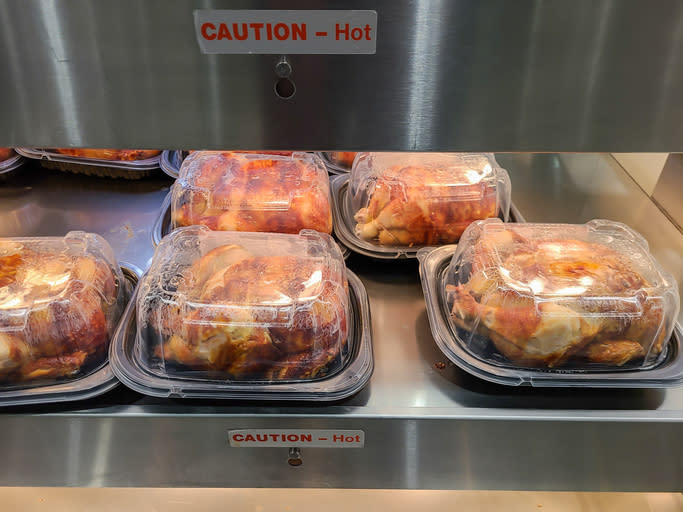
7.“It’s not really a hack, more just rule of thumb. Off-brand is just as good as brand name. I promise you, you can find an off-brand version of what you’re looking for that will taste just as good. The only thing you really need name brand of is maybe haircare and skincare.”
“You don’t need the Hershey’s or Ghirardelli’s chocolate chips; the Walmart brand ones will taste the same and save you, like, $3.”
—elissad3

8.“Read the stores’ sales circulars, check your pantry for what you already have, create a menu, make a list of what you need, and STICK TO IT. I used to waste so much money on off-list, impulse purchases.”
“They were usually on sale, and I thought I’d be saving money because I’d ‘use them eventually’ only to have a mishmash of items that I couldn’t make a meal out of — and which often expired before I used them. Sticking to a list saves me time and money, and planning a menu cuts down on waste.”
—debrastarrm
“I check out flyers online, see what’s on sale, especially for proteins and cheese, and I build menus based around that.”
—l44172b2d2

9.“Just make that coffee at home. I’m someone who loves going on walks, but I need to come back home with something in my hand, and I live near so many cafes. There’s something about holding an iced coffee and sitting outside. But in reality, it’s much cheaper over time to just buy a few clear glass tumblers, some Torani syrups, or even make your own.”
“I’ll admit, it’s easier said than done, but it’s worth it. You can even buy the beans your local coffee shop uses if they sell them — most do!”
—arions
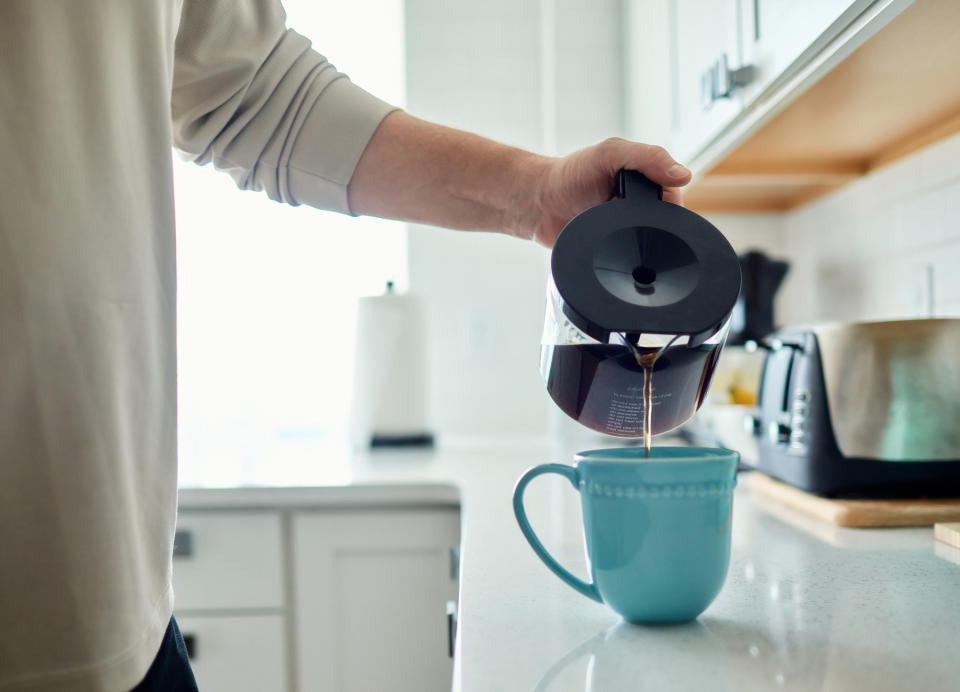
10.“Figure out what you want to eat for the week. Write it down and only buy the ingredients for those meals.”
—leahjm
“Also, have an idea of how many packages of those perishable ingredients contain. If you can only buy a large bundle of say, green onions, even though your recipe calls for way less than that, find other meals that share the ingredients you buy to help make those ingredients go further. It will help you save money and eliminate food waste.”
—robert_dunder
“You’d be surprised how much this helps! I used to always buy basics, like carrots, onions, canned tomatoes, etc., thinking they go with everything and I will always need them (‘good idea to have them just in case’). There were times I would be constantly throwing away food that had rotted from disuse. When I started making a weekly meal plan, I was surprised at how few ingredients I actually needed! I remember one whole month, I didn’t buy carrots or ground beef because the meals we came up with just didn’t need them.”
—trilingualmom
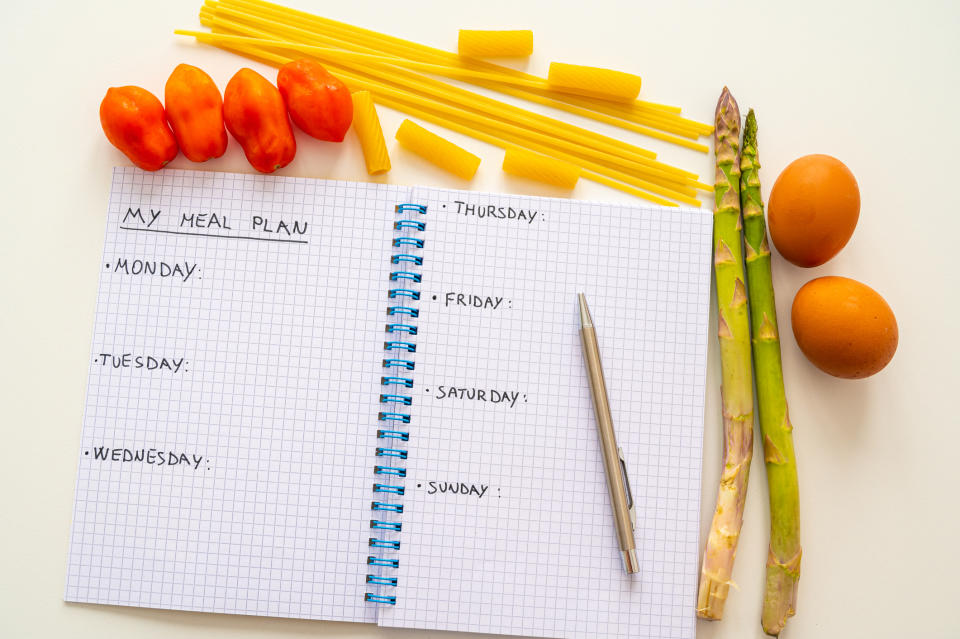
11.“I am single and live alone, and food waste to me is a big culprit to overspending. I typically shop for only a couple of days rather than a week or more in case something I buy goes bad. I have managed to cut down my food waste to almost zero.”
—Anonymous, Texas

12.“If you can, judiciously manage your money, put everything on credit, AND PAY IT OFF MONTHLY. The 2% doesn’t seem like much compared to cash, but it adds up.”
“Also, scan receipts if you don’t mind the privacy loss — there are still several receipt apps that’ll give you a few cents here or there for scanning receipts. And coupon clip like hell; before I buy any groceries, I check to see if there’s a coupon.”
—24, Illinois
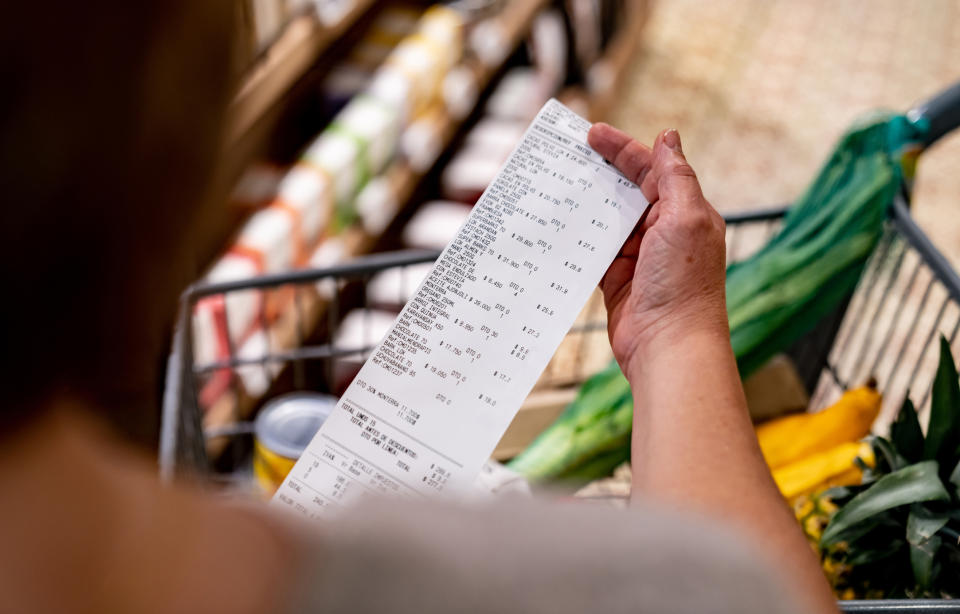
13.“For a long time, I’ve been making my own frozen dinners. I often work long hours or have to get up early or come home late with no energy to cook, which makes me tempted to eat out at work for lunch or order takeout when I get home and don’t want to cook. And frozen meals are expensive and usually pretty disappointing taste-wise. So, I make my own. I use dollar-store plastic containers and make items that freeze well. I make a big batch of something, usually on Sunday, and package and freeze all the leftovers. After a few weeks, I usually have a few options to choose from.”
“Then, I can reheat them at work for lunches or on a weeknight when I don’t feel like cooking. Freezing also means you don’t have to worry about leftovers going bad in your fridge. You do need to be selective about what you freeze. Soups are great, but soups with cream will curdle. Formerly, crispy foods will get soft. So, sticking with soups, stews, casseroles, curries, and saucy items or items meant to be soft is usually the best bet. Breakfast burritos or other burritos can be frozen. You can also freeze sandwiches and let them thaw. Just avoid mayo as it gets kind of weird when it freezes. It will keep food from going bad as well as save you money on takeout and frozen meals.”
—32, Tennessee
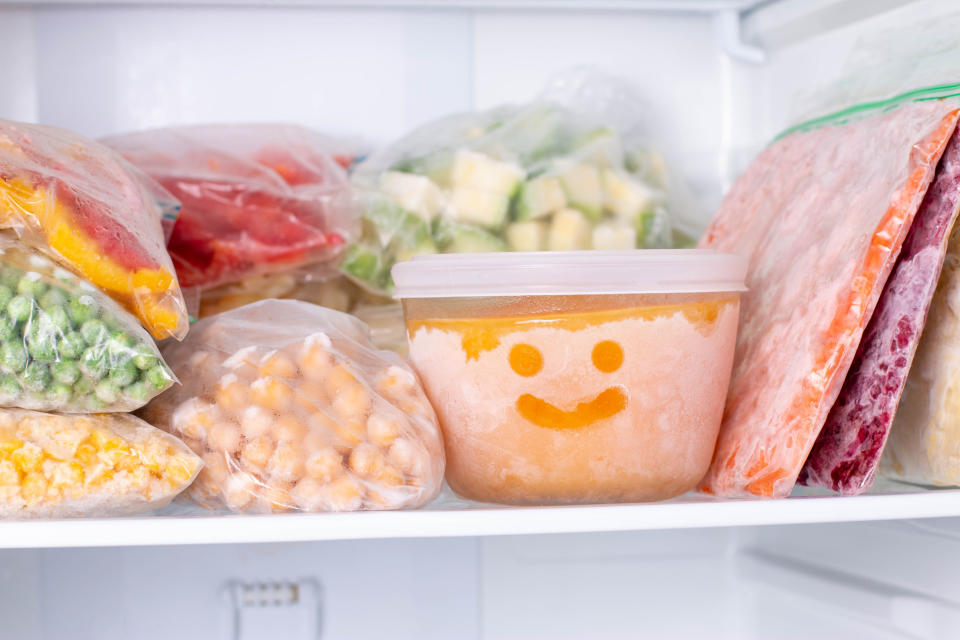
14.“We use rice, noodles, or potato as cheap filler to make our meals more filling.”
—30, Wisconsin

15.“Make your own smoothies! I love smoothies, but I can no longer justify dropping $9–$11 for one. Buy a small blender, frozen fruit, yogurt, and juice or milk. I look up the ingredients of my favorites from the menu, or I get substitutions. Everything pays itself over!”
—27, Massachusetts

16.“What did I even do before I had an herb keeper? I can keep parsley, cilantro, and mint fresh for up to three weeks with just a quick change of water every few days. Total game-changer.”
—34, Canada

17.“I buy vegetables and fresh eggs from the farmers market and locally sourced meat when I can. I cook up meals to last a week so I don’t have to exhaust myself thinking up recipes every day. I seldom eat out. But I do get tired of eating leftovers by the third day, so I vary it up by raiding my pantry so I’m not tempted to eat out. Sometimes, I whip up a quick egg dish, a bowl of ramen, or miso soup to satisfy my cravings.”
“I’ve been working on my food insecurities. I try not to watch food shows and cooking shows late at night. They trigger my obsession with food. The key to spending wisely is to find out what it is that we’re really lacking in our lives and fix those things. Food will not cure boredom.”
—62, Wyoming

18.“Always make a list and stick to it. Check out the flyers for different supermarkets and compare the prices. Use grocery reward cards if your local supermarket has one; it saves quite the amount of money. Stick to grocery shopping once a week (preferably the weekends) so that you only buy things you really need for the upcoming week.”
—45, United Arab Emirates

19.“Don’t wanna meal prep, but wanna make sure you have food ready to go at home? Prep cheap meal ‘building blocks.’ By prepping your rice, legumes, beans, and on-sale veggies, you can quickly and easily build whatever meals you want. Prep condiments at home as well! Chili crisp can cost $7 a container, but literally $1 to make for the same amount.”
—26, New York
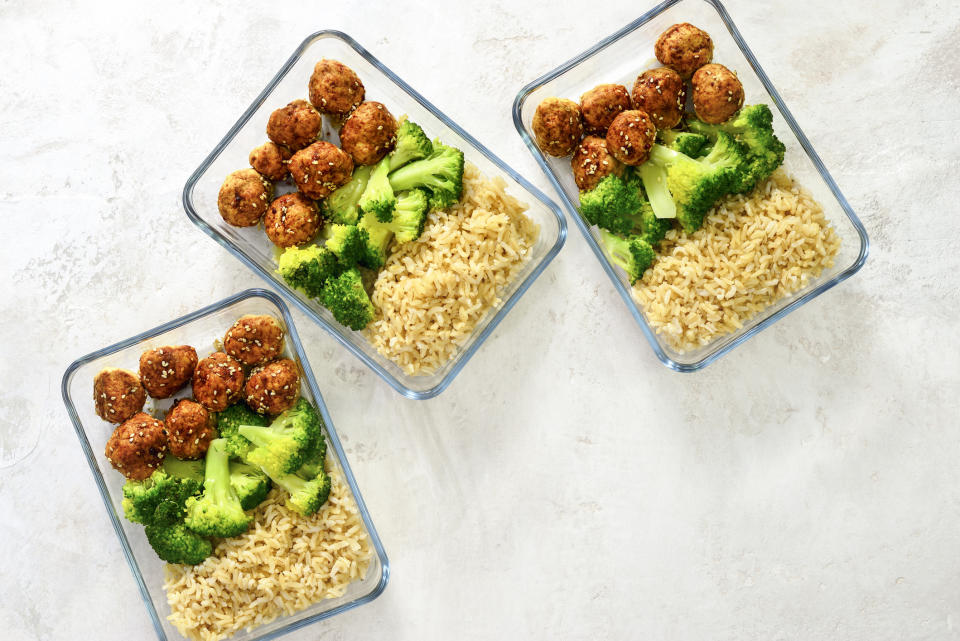
20.“Buy frozen vs. fresh. If there’s something you need that you typically buy weekly and it’s on sale, buy two to three depending on how quickly it expires and if it can be frozen. Store brands are great for most basic ingredients like flour, sugar, canned foods, and frozen vegetables.”
“Where it gets tricky is prepared shelved foods since those have a specific flavor profile that’s hard to replicate (like cereals, pasta sauces, baked goods). Get what you’ll actually like eating for those.”
—panda_13

21.“I go grocery shopping starting around two hours before the store closes. They seem to have a lot of things marked down by then just to get rid of it — especially in the deli/bakery section.”
—pepper314

And finally…
22.“Use your leftovers! Repurpose them. Made meatloaf one day but need a meal the next? Chop it up and make shepherd’s pie from it. Meal planning is important in that regard. We make our own ‘Uncrustables’ for lunches at school. With the leftover outside, I break it up, add an egg/milk mixture, cinnamon, and bake it like a casserole.”
“My son loves it, and there’s no waste from the edges.”
—d43b162e36

Have you tried these tips? What are some other ways you’ve saved money on food? Let us know in the comments below!
Note: Some responses have been edited for length and/or clarity.
Credit: Source link













































